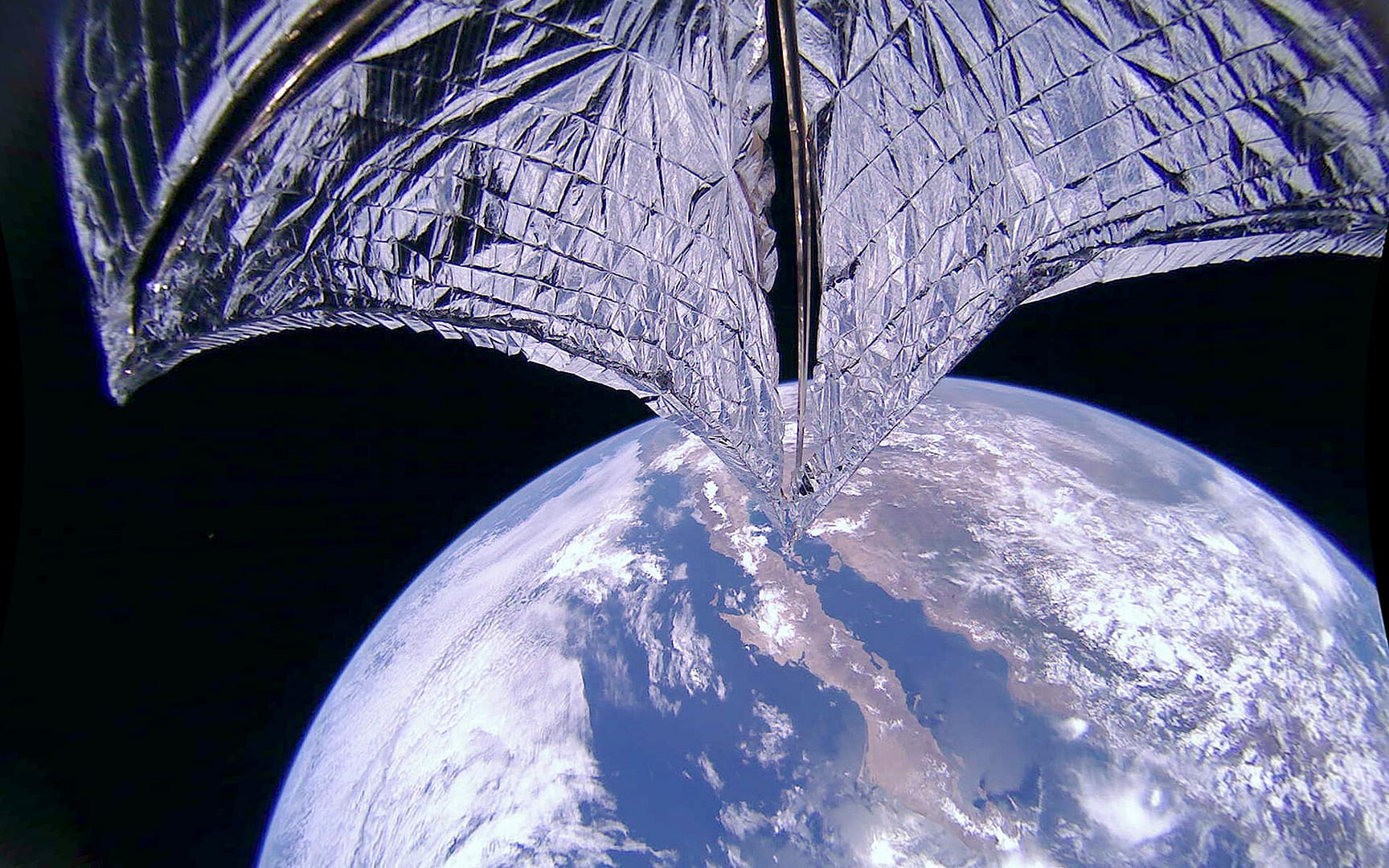What if we could sail through space with the gentle push of the sun? We are entering a new age of space exploration, and it is not powered with rockets. Instead, by an idea that was first thought up in the 1600s. Now, with the help of Bill Nye and the folks at the Planetary Society, this centuries-old idea is coming to life!
Solar sails allow us to harness the power of our sun to sail through the cosmos, ushering in new frontiers in space exploration!
For us here on Earth, this technology means that we can explore places we were previously unable to send technology. With the solar sail, we could explore new depths of space or corners of our solar system we haven’t been able to reach yet. 1
If all this new technology wasn’t cool enough. Some of the most recent work in solar sail technology is being led not by giant government organizations, but by ordinary people like us! Using crowdfunded technology, the Planetary Society and their CEO Bill Nye (yes, that’s the science guy) are working to connect space to all of us in new ways!

What exactly is a solar sail?
Well, it’s like a regular sail here on Earth that is propelled by the wind. Except, in space, the sail would be propelled by the power of the sun. (Don’t worry, we’ll get into how that works in a moment).
Traditionally our spacecraft are powered by rockets that push them around in space or rely on gravity assist. This is fine, but it ties us down when it comes to where and how we can explore. Traditional spacecrafts have to carry lots of rocket fuel with them to maneuver through space, meaning that once the fuel runs out, the life of the spacecraft is over. With the solar sail, scientists are able to navigate space as they would with a sailing ship, tacking to move the craft from one place to another, not relying on an internal source of propulsion. This allows us to navigate space in ways we weren’t able to before!
What’s amazing about all of this is that we aren’t dealing with ideas strictly from the 21st century. In fact, if you really want to look back, a version of the solar sail was first dreamed up by Johannes Kepler in 1608. In a letter to Galileo Galilei he proposed the idea of sailing through space, if only someone was brave enough to venture there:
“Provide ships or sails adapted to the heavenly breezes, and there will be some who will brave even that void.”
— Johannes Kepler 2
Now, Kepler probably didn’t know we’d be using the photons of the sun to move our ships instead of “heavenly breezes”. But it is remarkable that at a time without steam engines, let alone rockets, somebody dreamed of sailing through space.
How cool is that!
So how does this all work? And how do you crowdfund the future of space technology?
To answer those questions we have a great video from the Planetary Society hosted by none other than the science communicator of my generation, Bill Nye.
Crowdfunding into Space!
Crowdfunding has been used to do a lot of remarkable things. But leading missions to space has to be one of the most remarkable. The Planetary Society is leading the charge on this front. Their mission is “to empower the world’s citizens to advance space and science exploration.” 4 They do this in a variety of ways, advocating in government for space exploration funding, working to educate people around the globe, and becoming leaders in space science through groundbreaking research.
So, what does it mean that 40,000 people made LightSail 2 possible? Well, it ushers in a new way of looking at how we relate to space. This is no longer something distant from us. Now, we can each play an active role in the adventure. All of us directly contributing to the progress of humanity! We are no longer separated by the barrier of enormous budgets, bureaucracy, politics, and top-secret walls. We are a part of the future of space science!
If you want to check out another amazing, crowd-funded space project we’ve featured check out this article!
So, how did it go?
LightSail 2 left Earth on June 25, 2019. As the backers and space enthusiasts back home waited eagerly, it made its way into space and on July 23rd it successfully deployed its sail. With this first hurdle crossed, LightSail 2 had an important mission: prove flight by light is possible.
So, did they do it? I think that only the enthusiasm of Bill Nye is capable of answering that question.
A huge congratulations to the LightSail team and those at The Planetary Society! They really are on an incredible mission and I highly suggest you go check them out. Their website has endless ways you can dive in and nerd out about space in whatever way inspires you! And, if you want to keep up with them make sure you follow them on Facebook, Instagram, or Twitter!
How you can get involved!
If you’d like to get involved to learn more about LightSail 2, pop over to the mission control page! There, you can check out the updated stats on the mission, read the latest pieces about it, and even check out where LightSail 2 is above your head! If you’re lucky, you might be able to spot it from down here on Earth!
You can also get directly involved with The Planetary Society! If you’re interested in the future of space exploration and want to support an amazing organization working to advance our knowledge and make space exploration accessible to more people, do consider getting involved! Check out this page for an entire list of ways you can become a part of The Planetary Society community.
Space has captivated us for millennia. Looking up at an incredible night sky and wondering “What’s out there?” connects us to generations of thinkers. It’s truly remarkable that we now have the ability to personally support and champion the next wave of space exploration. Who knows what we’ll discover together!
Stay beautiful & keep laughing!
-Liesl

Don’t miss out on a single article!
Enjoy unlimited access to over 500 articles & podcast that give you a positive perspective on the state of the world and show you practical ways you can help.
Notes:
- The Planetary Society. “What Is Solar Sailing?” The Planetary Society Blog, www.planetary.org/explore/projects/lightsail-solar-sailing/what-is-solar-sailing.html. Accessed 20 Aug. 2019. ↩
- The Planetary Society. “The Story of LightSail, Part 1.” The Planetary Society Blog, www.planetary.org/explore/projects/lightsail-solar-sailing/story-of-lightsail-part-1.html. Accessed 20 Aug. 2019. ↩
- The Planetary Society. “Solar Sailing with Bill Nye.” YouTube, The Planetary Society, 12 June 2019, www.youtube.com/watch?v=Gk3K2qr9oiY. Accessed 20 Aug. 2019. ↩
- The Planetary Society. “About Us.” The Planetary Society Blog, www.planetary.org/about/. Accessed 20 Aug. 2019. ↩
- The Planetary Society. “LightSail 2 – Mission Success!” YouTube, The Planetary Society, 31 July 2019, www.youtube.com/watch?v=gFDOmvBmWng. Accessed 20 Aug. 2019. ↩








